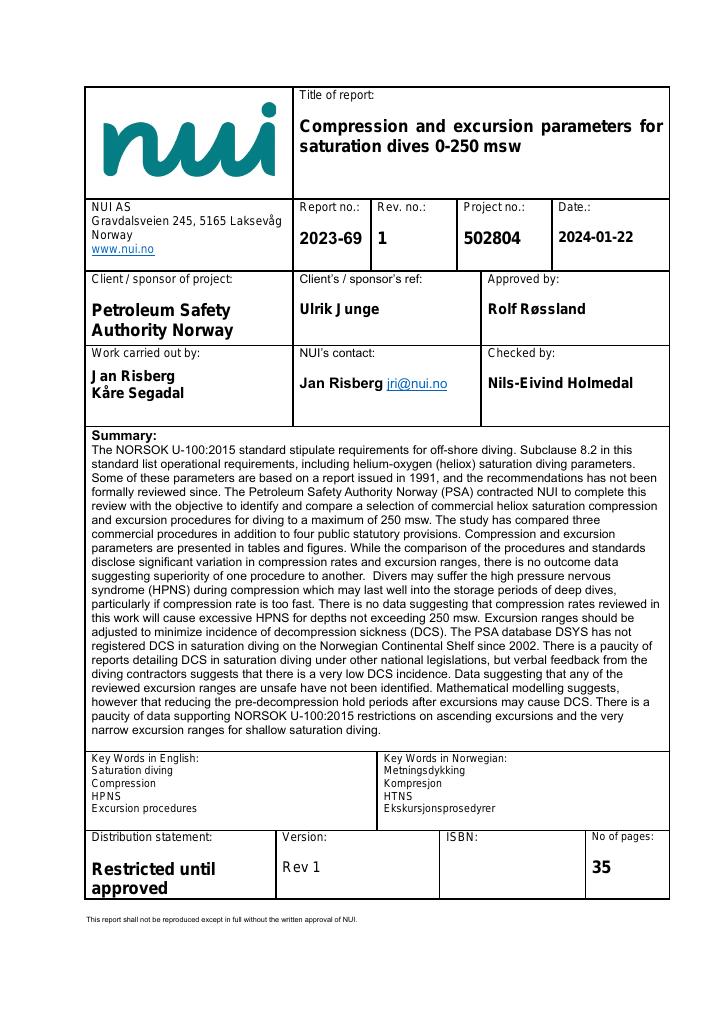Studie
Compression and excursion parameters for saturation dives 0-250 msw
The NORSOK U-100:2015 standard stipulate requirements for off-shore diving. Subclause 8.2 in this standard list operational requirements, including helium-oxygen (heliox) saturation diving parameters. Some of these parameters are based on a report issued in 1991, and the recommendations has not been formally reviewed since. The Petroleum Safety Authority Norway (PSA) contracted NUI to complete this review with the objective to identify and compare a selection of commercial heliox saturation compression and excursion procedures for diving to a maximum of 250 msw. The study has compared three commercial procedures in addition to four public statutory provisions. Compression and excursion parameters are presented in tables and figures. While the comparison of the procedures and standards disclose significant variation in compression rates and excursion ranges, there is no outcome data suggesting superiority of one procedure to another. Divers may suffer the high pressure nervous syndrome (HPNS) during compression which may last well into the storage periods of deep dives, particularly if compression rate is too fast. There is no data suggesting that compression rates reviewed in this work will cause excessive HPNS for depths not exceeding 250 msw. Excursion ranges should be adjusted to minimize incidence of decompression sickness (DCS). The PSA database DSYS has not registered DCS in saturation diving on the Norwegian Continental Shelf since 2002. There is a paucity of reports detailing DCS in saturation diving under other national legislations, but verbal feedback from the diving contractors suggests that there is a very low DCS incidence. Data suggesting that any of the reviewed excursion ranges are unsafe have not been identified. Mathematical modelling suggests, however that reducing the pre-decompression hold periods after excursions may cause DCS. There is a paucity of data supporting NORSOK U-100:2015 restrictions on ascending excursions and the very narrow excursion ranges for shallow saturation diving.
